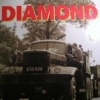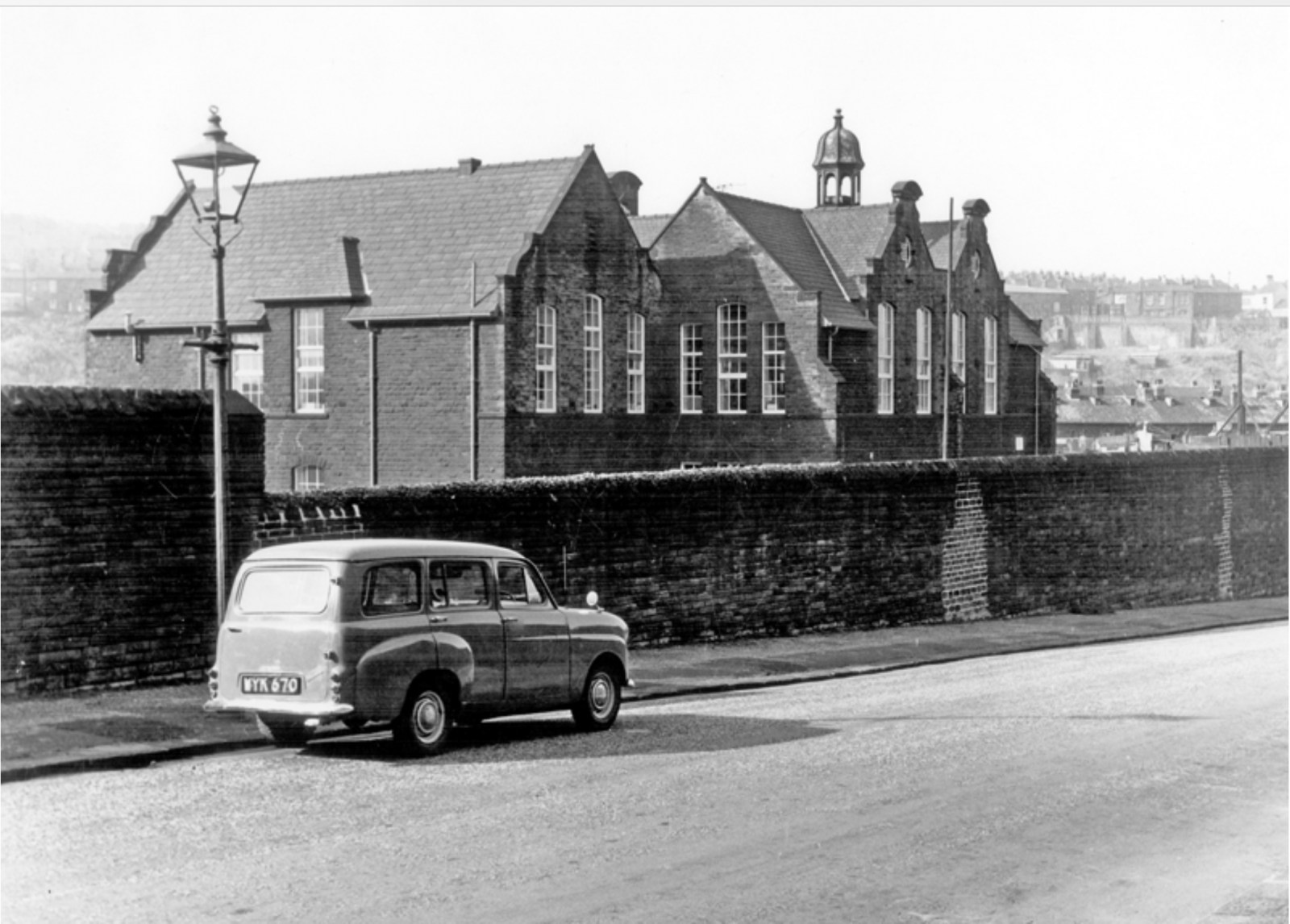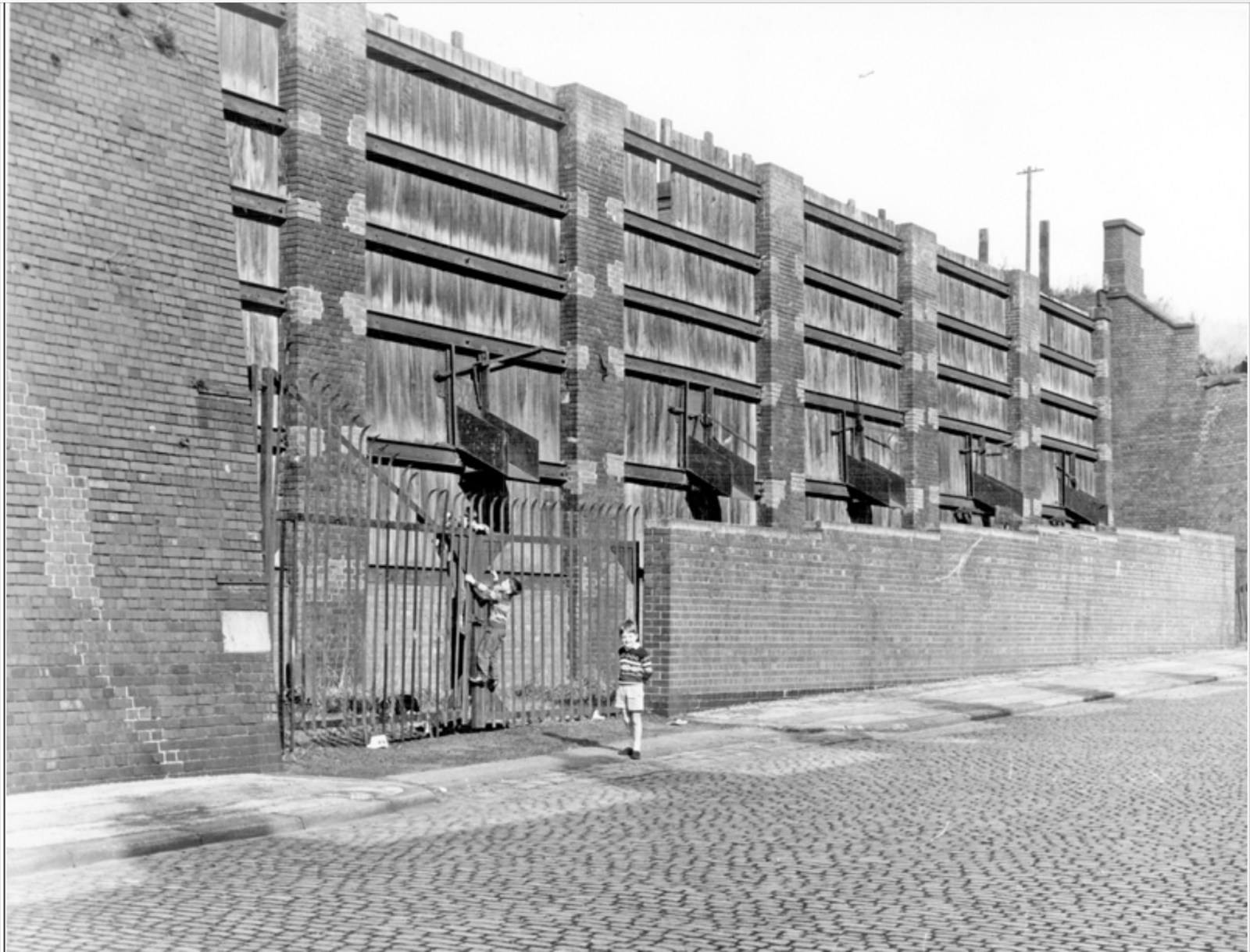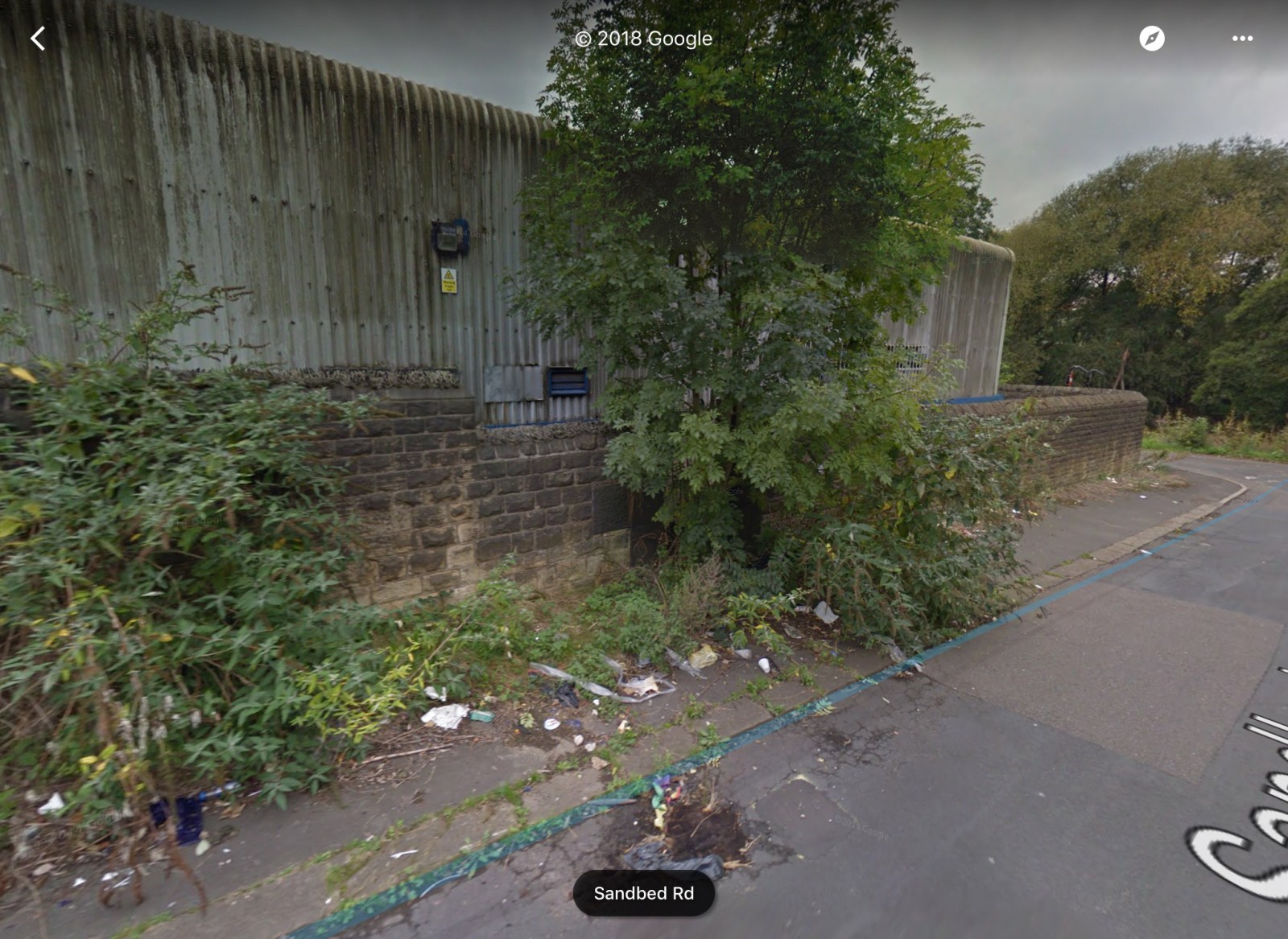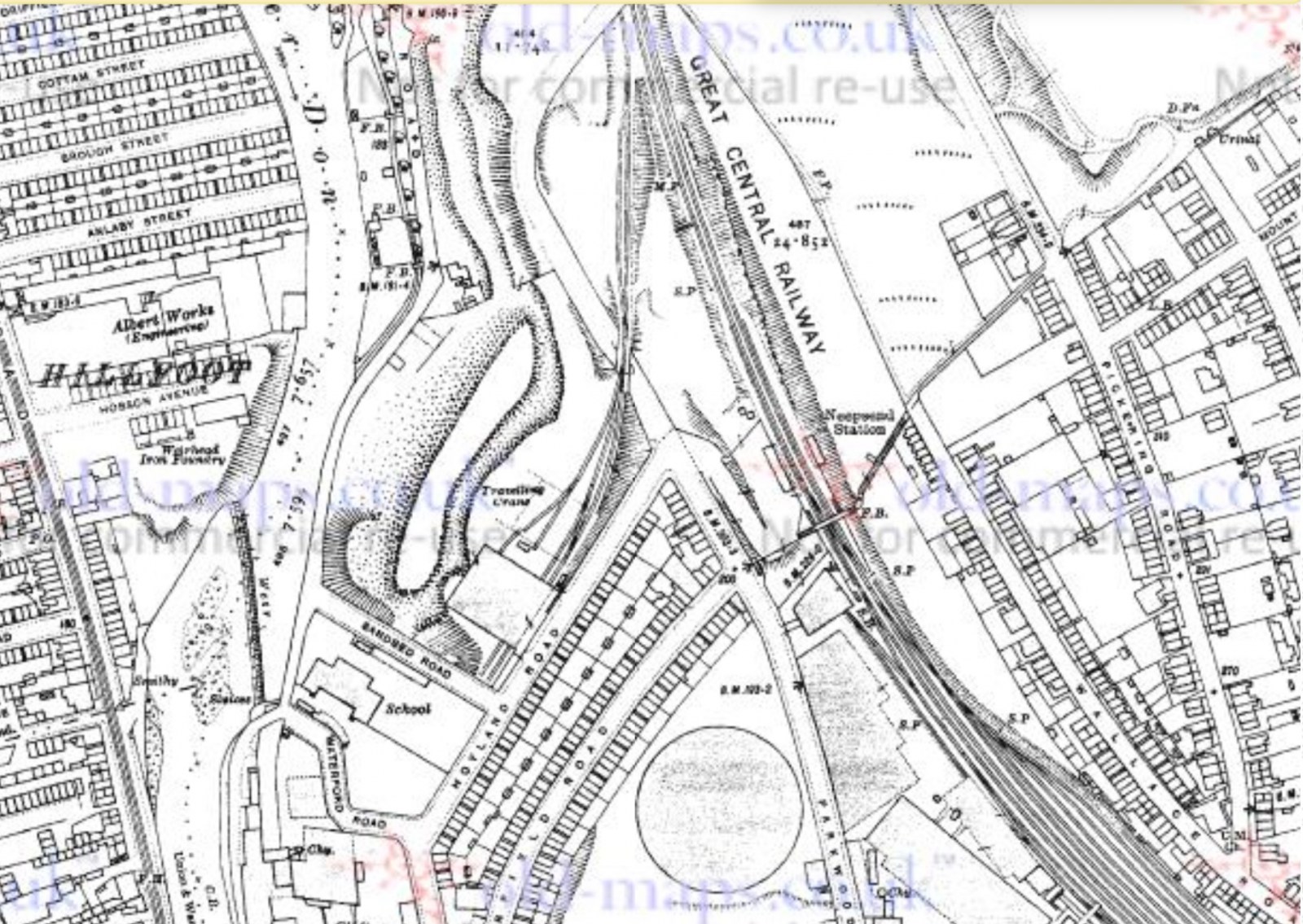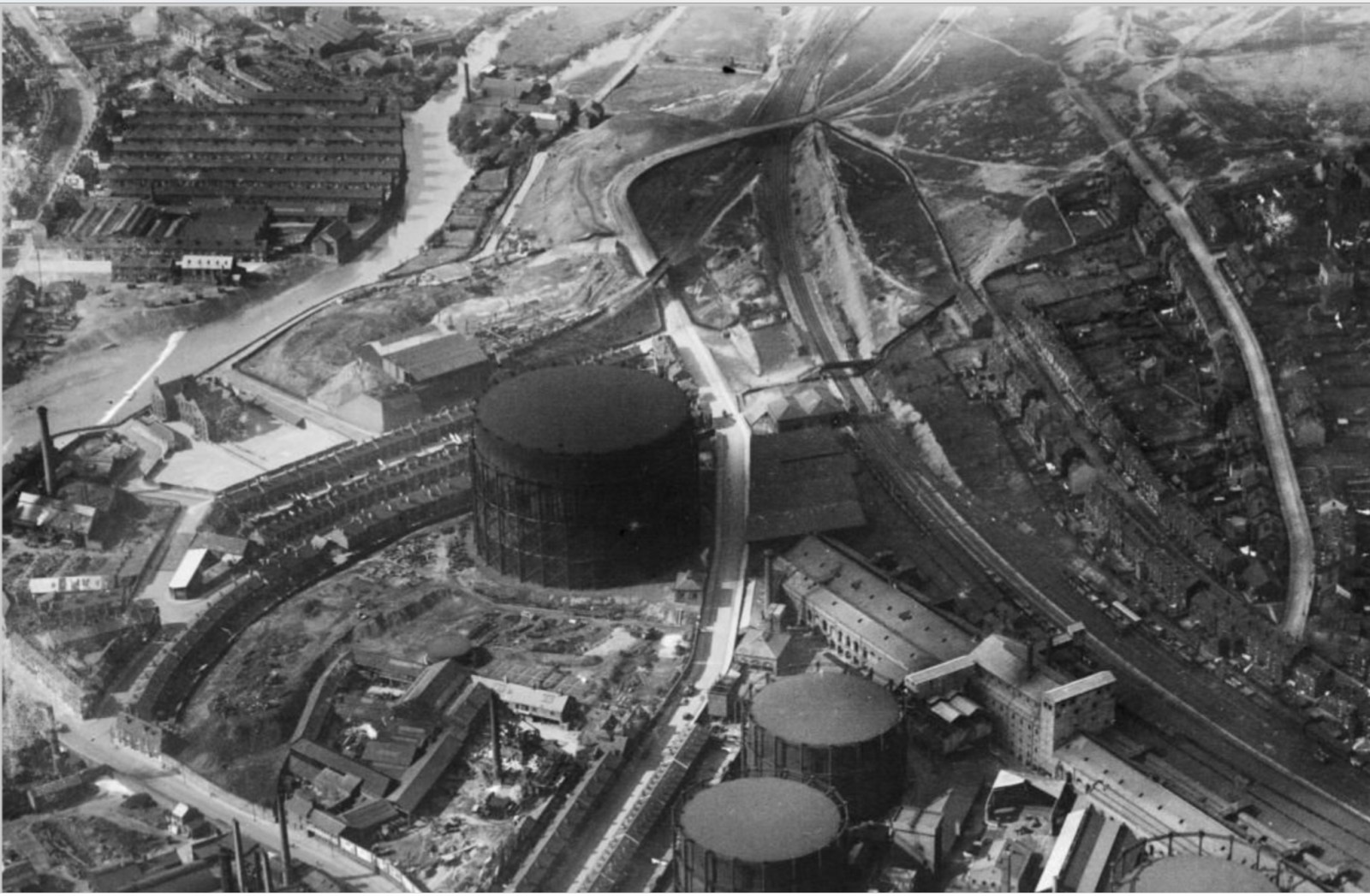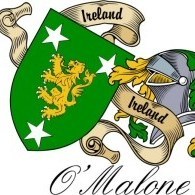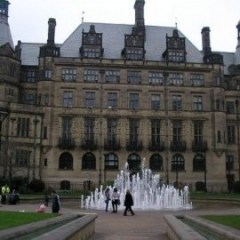Search the Community
Showing results for 'coal pit lane'.
-
I was down there last year, how scruffy it all is now. The photo of the school shows just how well built they were in those days and brought back many happy memories. Incidentally "Waterside Echo" was the title of our school magazine. As I started school in 1949 Neepsend Station was being demolished, the railway bridge over Parkwood Road went two or three years later. Not sure about the coal shutes and the dust,but while they were in operation as soon as the gates were shut every one was out with brushes and shovels, "cleanest road in Neepsend." Roy was in my class, I took the Central Tech exam with him along with Keith Hackett and Frank Wheldon. result 3-1 to them. I don't remember much about the practice for the Queens visit but remember seeing her at the football ground. The last time I was speaking to Roy would have been in the 80s, he had his own building firm then and was putting a large detached house up at the bottom of Industry Street Walkley. W/E.
-
Just browsing around for more photos and info on the school. The high wall and coal bunkers look interesting, so wonder if anyone has any recollection of them in use? I see the railway siding on the 1923 map, when the bunkers were in use, but I bet the residents on Hoyland Road opposite were always covered in coal dust?! The school boys entrance gate is all but hidden by the tree now, but an interesting story in the link and maybe you knew Roy Priest from 1953? http://www.geograph.org.uk/photo/1035068 http://www.geograph.org.uk/photo/1035144 Another vibrant, bustling corner of the city now gone, except for a few industrial units and some echoes of the past?
-
Dose anyone remember their Gran having a container of 'COAL CRYSTALS'. My Gran had them in an up turned glass jelly mould, on top of her big radio, sat on a cupboard. ( I guess out of the way of little fingers ) Every so often she would get them down to 'feed them', she used an Eye Dropper, with some sort of liquid in, which I was allowed to drip over the Crystals, then we put drips of Red and Blue ink on the top. A couple of weeks later, we would get them down to find more beautiful Pink and Violet Crystals had grown from the coal in the bottom. It always fascinated me how it happened.
-

St. Mary's Walkley
Paul Connor replied to Paul Connor's topic in Sheffield Churches & Religious Buildings
I was born at number 2 Duncombe Street in 1949. It was the corner house at the bottom if the street. We moved to Rivelin Valley when I was six or seven, but my grandparents still lived in that house for many years after. Two up two down, cellar ( I can remember the coal man delivering ) and attic, outside toilet. No bathroom, used to get the tin bath out. It had a coal fire and that fuelled the oven. I can still remember my grandmother baking bread. Used to walk from Hollins Lane to the church three times on Sunday's. Choir practice Friday night. -
I remember the coal man delivering in the late 50's / early 60's around Pitsmoor, Brunswick Road, Nottingham Street Marcus Street, Spital Street, area I think his yard was on Neville Street, but not sure. In fact I can still remember his face. He was a mate of my dad's, and sometimes my Brother and I would sit in the cab when he went around collecting his money. But for the life of me I can't remember his name and I don't have any photo's of him. I wonder if any one on here can remember his name or has any photo's ?
-
I looked on the coal maps and there's nothing in the vicinity. The tunnel is also roughly following the contour of the hill (or is at least perpendicular to it at this point) which a drift never would If someone were able to get a photo showing the full cross section of the tunnel, that would tell a lot Edit: You know what - it could even be the 'coal hole' for the original Ash Leigh house ? (assuming it doesn't go all the way under the road)
-
I’m sure we can cross mining activity off the list. Any coal found that close to the surface ( if you can even find it that close?) would simply be open casted. I’m no expert and may have this wrong, but seem to remember reading that the seams of coal run slightly down hill, as such in South Yorkshire.... Cap House just north of Barnsley had one seam at a depth of 140m were as Dinnington was far deeper. Given that, I think Handsworth would be more famous as a mining town with if it had a 4foot deep seam.
-
He used to deliver to our house on the Manor right up till the 80's when the council fitted gas central heating. I remember wondering if we were going to get coal delivered during the coal strike of 1984. Craig complained about how the council switching people to gas central heating was killing his business. However he was getting very pricey with his coal.
-
26 Market Street H.& W.T. Maw -coal dealers.
-
I really can't recall a coal merchant having been based on Market Street, in the 1960's, and I was around then. I remember W. Craig, but I am certain that they were based at 148, Sheffield Road, just above where Woodhouse West End School used to be. I also remember Wilf Maw, but I think that he came from Ecclesfield way, and also Arthur Dixon, based on Olivers Mount. Will really have to think about this one, as I don't recall anyone actually having being based on Market Street.
-
Does the name Craig ring a bell? A Coal man of that name delivered on the Manor estate in the fifties.
-
Does anyone know of a Coal dealers in Sheffield around the woodlouse area in the 1960s? I believe the dealer operated from a yard in Market street. I would be really interested in any information Thanks
-

MY FAREWELL TO THE SHEFFIELD MANCHESTER ELECTRICS - CONGREVES 1970
Lemmy117 replied to RLongden's topic in Sheffield Buses, Trams and Trains
There were two types of electric locos used, the EM1's later class 76 that ended up running in pairs, and the EM2's that would have been designated class 77. The 76's ran until closure of the line on the coal traffic. The class 77's were designed as express passenger locos, but deemed surplus to requirements by 1968. There were only 7 locos in the class and were all sold to the Dutch railways. Two of them have returned to Britain, one at the Midland Railway centre at Butterly and one at the Museum of Science and Industry in Manchester. -

MY FAREWELL TO THE SHEFFIELD MANCHESTER ELECTRICS - CONGREVES 1970
Old rider replied to RLongden's topic in Sheffield Buses, Trams and Trains
Ah the excursions I was taken on as a child from Wadsley Bridge Station to visit Belle View Zoo on this line. A little historical note. The electrification of this route was proposed prior to WW2 and the first electric loco was built under Sir Nigel Gresley in 1939 and was stored at Doncaster until after D Day. After the invasion this loco was used to aid the war effort by running on continental DC electrified lines of the low countries (France had gone for AC electrification pre war) . On its return to the UK it was named Tommy in recognition of its war record. The DC system allowed the locos to act as generators on the down hill sections of the line putting energy back into the system to help power trains on the uphill sections of the line helping the heavy coal trains that ran from Wath upon Dearne. DC also was more controllable than AC in the age before the invention of solid state devices i.e transistors. After the closure of the line I understand many of the locos were sold to the Dutch Railways where they ran for many years -
The three day week ,during part of 1974 ,was entirely caused as a direct result of the Miners strike and the need to conserve coal stocks. Therefore electricity ( then almost entirely generated by coal) was effectively rationed for commercial use. Interestingly, in some industries, the affect on output of the 3 day week was none existent. Production levels remaining the same...Proof of Parkinson's law maybe? I think you are confusing your decades regarding unemployment. The 80's were much, much worse. In 1971 unemployment stood at 1 million, rising to 1.5 million in 1978. ( a rate of 5.5%) In 1984 it stood at over double the '78 level with 11.9 % of the working population unemployed. Locally, in 1982, some 2 years before the maximum national number of unemployed, Sheffield had lost at least an additional 20,000 steelmaking jobs and now had 40,000 unemployed...a rate of 13.9% Regardless, the 1970's were good years for many whilst the 80's were horrendous ones for many as well.
-
Found this while doing some research if its of interest to anyone researching mines. UK Coal Mining Data Lots of details on coal mines.
-
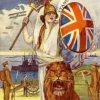
Introduction Of Diesel Bus In Sheffield
Unitedite Returns replied to hilldweller's topic in Sheffield Buses, Trams and Trains
Creosote is just another hydrocarbon derivative that would have been readily available at that time, as it is and was, a by-product of coal-gas and coke manufacture, both common enough industries back then. Creosote in its primary distilled form is a thick, oily liquid, though still readily combustible, like most hydrocarbons. However, when generally sold for retail, or industrial uses, it is usually diluted with other, more free-flowing hydrocarbon based solvents, in order to make it easier to use. Benzene, Toluene, Xylene, Ethyl-benzene most probably. These other, hydrocarbon based solvents, would also be by-products of coal-gas and coke manufacture, again, readily combustible, and in some cases more so. So it is probable that what they were really after, were these diluting solvents. So, you could most certainly use such a mixture in an internal combustion engine. Certainly an impressive piece of lateral thinking on the part of Sheffield Corporation Transport, but I would imagine that Revenue and Customs might not have been too impressed had they known, as it does sound a little akin to using red diesel on the public highway. -

Introduction Of Diesel Bus In Sheffield
Keith_exS10 replied to hilldweller's topic in Sheffield Buses, Trams and Trains
Looking back over the various posts it occurred to me that there were a lot of loose ends regarding the producer gas buses. I thought there might be a few problems because of the time lapse back to 1934-1944; in fact there proved to be more than I expected for this period only. As of now, far from being dead, producer gas is alive and well and well documented, being used in places like India and Brazil using biomass, dried bio waste, wood chips or anything carbon based where coal is scarce or hard to come by. It is used on constant speed stationary applications like pumping in gas turbines or reciprocating engines designed specifically for gas power. . So far however there is silence on transport applications. There a flood of literature including academic research results and some unexpected odd contributions by the United Nations Food and Agriculture Organisation. Reverting to this thread re World War 2 there are odd bits to be picked out of many sites but because of the time lapse I have not yet found any drivers experiences; only those of passengers reminiscences passed down from years back. Equally very few performance figures have survived but the views of transport managers have. There are references to early trials but the Birmingham trials of 1934 using very high pressure compressed gas can be discounted. The continentals were at it and Germany quoted 500000 units in wartime use including motorcycles The U.K. government had already distributed 3000 producer gas units round the country in 1938. In 1942 questions were asked in Parliament as to why only a few hundred were in use, the answer being that operators had bought them as insurance in case of war. Supposedly at the beginning of the war the C.E.O. of the Tilling Group persuaded the government that producer gas would be a Good Thing, but I have my doubts as the gas units in were production and out to users. The government had an overall target of 10000 and issued a directive to all U.K. operators telling them to start converting with a fleet target of 10 percent, Originally there were one or two variants mounted either on wheels or fixed somewhere around or behind the vehicle on brackets. The photo of the London bus is the ultimate government standard so we know why they all looked alike whoever made them. Oddly enough by some legal quirk this instruction was also binding on Australia who dutifully complied. The system was essentially a closed vertical furnace with an airtight lid and was filled to the top. Anthracite was the fuel of choice as being over 99 percent carbon. Although only available from a small number of pits in the Swansea area supply does not seem to have been a problem. Australia used wood chips.The furnace had air inlets near the base, solid bottom, no fire bars or similar. The gases went up and out through a grit filter and a minute water wash to catch any acid or tar vapours and was then piped to the engine. To start up, light oil of any sort was poured over the fuel, slight pause to let it penetrate, then ignite it and put the lid back on. Running the engine provided the draught for the fuel which only burned in a ring at air intake level. From start it was reckoned that the system was in full going order in about 12 minutes. One filling was good for 80 miles or so, but no figures for what weight of fuel that was. Some operators did carry extra on the bus. As an example of deterioration of information over time, one eminent preservation body calls it producer gas but then describes making water gas. Another journal roundly states that only petrol engines could be converted. Enough said. Dealing strictly with the common simplest system of hitching the trailer on and piping in, both petrol and diesel engines had a T piece with flap valve let into the air intake plus other odd driver controls. Both types as boginspro has quite properly posted were run as dual fuel engines but slightly differently. A petrol bus was started on petrol, the driver then opening the gas flap valve and actually closing the petrol feed by an additional tap operated from the cab.. Ignition of the gas thereafter by the built in ignition system. After this it gets hazy. There is a reference that once running on gas that was it for the journey. Whether there was ever any use of both fuels together is not stated. . By implication the throttle pedal was used as normal. The diesel engine also had a T piece let into the air inlet but which had a driver controlled flap valve in both arms. To provide ignition the engine ran all the time on a minimum of about 12 -15 to a maximum round 40 percent diesel, the remainder being producer gas.Again there are only sketchy operating details but presumably the gas valve was fully open. We are left to assume that the throttle pedal was used conventionally except that seems to negate the idea of saving diesel. There is no indication that the gas line valve was used to control the speed level.. Confusingly there are some instructions for no reason that makes sense to me for turning corners by shutting the gas off and doing right or left turns on diesel, remembering to turn the gas back on afterwards.and adjust the air valve as necessary. There are two major drawbacks to the system. Firstly there is the engine. A petrol engine compression ratio is too low for gas which lowers the power output. A modern high efficiency diesel would be too high.The WW2 diesel was thought to be only slightly over, but lead to some combustion problems. This whole situation was simply dealt with by ignoring it. Producer gas is rated as a Low Calorific Value Fuel for a start. A good ratio in the producer gas was 35 percent combustible and 65 percent nitrogen compared to 100 percent with liquid fuel. In use the gas is further diluted with nitrogen from the combustion air so the overall power loss was finally reckoned to be at best 30 percent or up to 40 percent on a bad day. Not helpful looking hopefully up the climb to Meadowhead. The diesel seems to have come off slightly better when hillclimbing. The air line flap valve was used to give smooth running and maximum power depending on the fuel/gas ratio and seems to have needed frequent adjustment Service stops needed to have the engine running fast to keep the draught up and don't let it go out on a layover at the terminus. That had to be a loop; no backing with a trailer. The one good thing was that the fire was self regulating by the induction suction and needed no attention from the driver. Then there is the end of the day's work. A dedicated maintainance unit was required Each day the furnace had to be cleaned out and refuelled. The grit filters were cleaned and the water wash checked and filled.. One check with the system working was to test the piping for leaks with a flame. A little blue flame at a joint indicated repairs were needed. All extra work. Engine problems are conjectural in my mind. The lack of lubricity by using gas in the cylinders is mentioned but not stressed though one source claimed a total engine failure after three months service. Another point stressed but nothing more was increased wear due to more bottom gear work.There are some references to problems with the gas trailer itself but again nothing specific. Sheffield converted two petrol buses, the first being a singledecker with the gas plant inboard at back of the saloon which must have made life interesting. Seating dropped from 32 to 20. It had the usual power problems and was banished to the Stannington route where it apparently coped as in 1942 it was reported to have done 20000 miles at lower (unspecified) running costs. The second bus was a double decker, converted once, had a unit change and quietly soldiered on. Eight diesel buses were then converted to have trailer units with a ninth in prospect that never got done. Reading the literature one thing which has survived is the general dislike due to lack of power and inability to climb which transport managers were not backward at saying. There are nationwide reports of stalling on hills, male passengers then having to get out and walk or all passengers having to walk uphill. No record of actual pushing though. Very rapidly where possible the gas buses were drafted to flat routes to get some use out of them. One odd record which has baffled me is the statement that the bus he was on "had to pause to get more gas into the bag before it could go". Not Sheffield I hasten to add. I cannot see how engine suction gets gas into a big roof storage bag. Was it perhaps a straight town gas conversion mistaken? I found no reference to a two gas set up. The complaints carried on and Sheffield Transport decided enough was enough and said as much so the ninth conversion never got done. Boginspro's post suggests the costs were abysmal. Rather surprisingly perhaps I found no direct emphasis or specific figures on the cost aspects. Certainly there were no records of miles per lb. versus miles per gallon. There are published figures of calorific values for anthracite, producer gas, diesel and wood but I admit to coming to a halt in trying to compare a gas with a liquid. Possibly the fact that the buses did provide a service of some sort in the war was recognised but my impression is that the lack of power took precedence over all else. For whatever reason the government in 1944 cancelled the conversion instruction. By all accounts the conversion back to whatever had been was done very rapidly. Think about it; remove the trailer and disconnect the gas pipe at the engine. Anything extra to choice and it might never have happened. What I expected to be a reasonably straightforward search wasn't. The information is scattered and sometimes dubious or impossible or useless. One slightly promising post further north of a late return home by gas bus turned out to be due to a flat tyre. My regret is the absence of first hand driving facts. Driving a diesel/gas bus appears to have been fairly complicated due to the need to keep adjusting the air and gas valves , a point not missed by one manager who declared it took "an extraordinary man to drive one" Probably experience counted for a lot. I doubt now if we shall get to know how difficult it really was and was it a problem. Apologies all round for having to assume and presume here and there. More hard facts would have been useful. And it's left one more question of the same era. Sheffield got complimented on keeping services going by buying creosote from Leeds and using it to dilute the diesel. What do we know about that? -

MY FAREWELL TO THE SHEFFIELD MANCHESTER ELECTRICS - CONGREVES 1970
RLongden posted a topic in Sheffield Buses, Trams and Trains
http://www.yorkshirefilmarchive.com/film/my-farewell-sheffield-manchester-electrics-congreves This is a film which shows the last journey by passenger train along the now closed route from Sheffield Victoria Station to Manchester. The film begins showing the overhead electric cables and then a train quickly passing over the camera, followed by the title: ‘My Farewell To The Sheffield Manchester Electrics’. The film then shows some buildings and a sign for Sheffield Victoria Railway Station, followed by the inside of the Station (though it is very dark). Propped up on the outside of a moving passenger train, the camera shows the train departing. The train is then shown from the side of the track passing by. It is being pulled by a diesel engine even though electric cable runs overhead. The route shows the Wicker arches, Neepsend, and Five Arches viaduct. Two tall chimneys are in the background, and from a moving train it passes cooling towers and sidings with coal wagons. Then, from high above on the hillside at Owlerton, a train is shown passing. The film shows inside the signal box at Wadsley Bridge with the track diagram, and a diesel pulled passenger train passing the box, followed by a class 76 electric. From the camera on the moving train the film shows the train passing Penistone Station, on to Dunford Bridge Station, into Woodhead Tunnel and leaving the Tunnel at Woodhead Station. Having left the tunnel the train passes reservoirs and the surrounding wintry countryside. It also passes over a viaduct, Crowden Signalbox, the sidings at Dinting, Mottram and Broadbottom Stations, and through Godley Junction, before the film comes to an end. Further reading... click on 'context' tab on linked webpage -
I remember when working in Tinsley in the 60's/70's that Blackburn Meadows Power Station was fuelled by coal. I say that because of the grit and smoke emanating from its chimneys. On checking I see It closed in 1980 and was still coal fired. In the 1950's we still had clothes rationing and people had far fewer clothes than today as a result clothes were looked after! The fashion, even into the 1970's, was for people, especially men, to dress "smartly" refraining from looking "casual" except for leisure.
-

Pedestrians and Traffic 1950
Unitedite Returns replied to madannie77's topic in Sheffield History Chat
Coal was still the principle source of heating used in most households at that time, gas was still produced from coal, most electricity power stations were gas-fired, the principle form of propulsion on the railways was still steam generated from coal, as was indeed, the energy source that powered most of those industries still prevalent at that time, and indeed, some of the fuel used in internal-combustion engines was being generated from coal-shale. The first clean-air act wasn't passed through parliament until 1956, so I suppose that some haze would have been present in most major conurbations most of the time. However, you certainly do get the distinct impression, that when in public, that there was a tendency for people to pay much greater attention to their appearance than perhaps we do today. Brilliant footage by the way. Much enjoyed watching it. -

Once Upon a Time - When We Could Actually Make Things
Athy replied to Unitedite Returns's topic in Sheffield History Chat
Quite so - if your factory's in the middle of a coalfield and your lorry burns coal, it does seem logical. Am I right in thinking that the fleet lasted until the end of Brown Bayley's works? Steamers apparently retained their popularity as brewers' drays long after they had largely been superseded by internal-combustion lorries in other spheres of transport. -

Washing day on Woodgrove Lane
Unitedite Returns replied to Sheffield History's topic in Sheffield History Chat
Wash-day in my maternal grand-father's house was on a Saturday morning, the significance of which I have never thought about before, but that is probably explained by the fact that he was a coal-miner. I remember that they possessed a fear-some, free-standing, electric motor powered roller-ringer, which looked more than capable of forming inch-thick armour-plate. The upside of this unusual schedule was that with the coal-fired range on full throttle, in order to produce sufficient hot-water, that the ovens were used, at the same time to cook the most wonderful rice-puddings, with thick, tasty skins on-top. In my parents' house, wash-day, was, for many years, on a Monday, a convention that remained unchanged for long after the introduction of modern domestic appliances, probably because that was the way that it had always been done. Today, we just bung the washing into the washer-spinner-dryer, and let the machine 'do-its' own thing' whenever the inclination takes us. String-beans however - horrible, nasty things, that we kids always avoided. POSTSCRIPT: By the 1970's, you could tell as to whose father worked where as to the design and colour of the 'acquired' ex-works towels hung to dry on the washing line. Now the guy who worked in the stores, his washing line could have rigged a clipper-ship. -
One of the most common recorded deaths is in children is often called "Teething". But most of these cases are now believed to be carbon monoxide poisoning, due to the coal fires. Most chimneys allowed this to come into the room where children slept. I suspect the "visitation of God" was used when there was no apparent cause of death.
-
9ķ . I see there have been several threads here and on the Sheffield Forum re the Bennett College, a subject I know a little about. Referring back, RichardB's post in 2009 taken from a GLIAS post of some ten years earlier is a reasonably fair overall historical summary but with which I have two slight minor problems. The first aim was to show a student had reached a certain standard. I am not aware that the College ever suggested the use of letters after the name as a result of receiving a diploma. The second aim was always to prepare students to take exams set by professional bodies who are exacting in their standards. A hard way either way just to get a few letters. The squadron leader's comments are odd considering the armed services have been encouraging the gaining of qualifications at all levels for years before that. Mr. J.H. Bennett (properly "The Govenor" but always known to the staff as "The Old Man") was originally a book salesman who realised there was a need and a market for education resulting in him originally setting up business in Regent Street. Both my father and his younger brother went to work at the College when they left the old Central Secondary School in the 1920s . In fact their education wasn't over as they were both required to get professional qualifications in their own time to act as tutors. (Chartered Institute of Secretaries and a degree in Electrical Engineering respectively ). Certainly by 1930 the College had moved to Melbourne Avenue into what was always supposed to have been the vicarage of the local church, which I have always had doubts about, purely based on the enormous room sizes and that internally it didn't look domestic. Heating was by hot water radiators only , from a coal boiler in the cellar, no fires or chimneys about the place rather suggests office use. No doubt someone will know. The site www.gracesguide .co. uk/bennett college has adverts from 1916 to 1960. In particular the 1935 version is worth study as a concise account of the philosophy, a fair selection of courses and the method of working of the business. This site also shows that both the photos of J.H.B. and the front of the building and the slogan " Let me be your father" were only used rather irregularly pre WW2 and not for very long. The slogan however was discontinued post WW2 but took a long time dying so the ad men got it right. . The delightfully described "overbearing and pontifical old man" by RichardB must have been an early example as it does not appear. from 1916 on. The later head and shoulders photo was Mr. J.H. Bennett himself. Originally very Edwardian, in 1933 it became a more modern one . By WW2 the adverts were slimmed down to more a less a catalogue of courses and the prewar florid prose and his photo diappeared permanently, except for one revival marking 50 years in 1950. The 1936 advert is interesting in that for the first time the picture of his son N.C.J.Bennett also appears, with the slogan changed to "big brother," supposedly the inspiration for George Orwell. I personally don't remember that slogan being used again by the College although RichardB insists it was, right to the end. I would be delighted to find any examples of the " be your big brother" ad. with Norman Bennets photo which have so far eluded me. I have wondered if this impression of building size in the prewar advert was the cause of a recurring problem.. Several times a year a student, often from Africa, would arrive with his case under the belief that it was a residential college with teaching facilities. Father always said he felt sorry for them, having saved the fare, made the journey and then been disappointed. I asked how he dealt with it, the answer being the same as now; point them in the direction of what passed for social services in those days for the state to deal with. I suspect it was the result of not fully reading reading the adverts which are fairly clear in this respect. I see there is still a recent reference to "grandfather attending" BOX's 2009 aerial view post is correct. Looking closely at it, the drive up the side can be seen as can a narrow covered path continuing in a straight line up the grounds of the neighbouring house. The College bought this property on Westbourne Road after WW2 and the path up to it was.added. It was used mostly for paper storage, a staff room for use at lunch time and any other odd purpose. One of its main attractions was an enormous very old mulberry tree on the lower lawn. Berries as big as your thumb, heavy crop and perfect with a drop of cream. Never had any as good since. It had another unsuspected feature which the College would not capitalise on. To the left on the aerial view is what would now be a garage but was and maybe still is is a proper Edwardian "Motor House" as prescribed in period journals as being necessary to protect the owners new car. A set of tall doors into a white tiled building with a pit in the centre. This had a set of stairs down and was also tiled. There was a large stone slab bench against the house wall. There was a full glass roof which fortunately had survived the blitz and gave maximum light. Exactly as the book said. Peel Street garage knew of its existence and for many months pestered the College to rent it to them as extra work space. The answer was always a firm refusal. It was very useful though. The family car spent enough time over the pit. There was one problem however. The drive sloped down from Westbourne Road and there was no drain in the pit. After a sharp shower wading about in several inches of water and working overhead lost it's appeal. The main College building had three floors and three areas.; the tutors were on the front halves of the two floors, the female clerical staff at the back away from the windows and the typing school up in the attic. This fascinated me. I learned my typing on the grandmother of all machines. Most of the College work was copy typed with some dictation and typists were not to be had, hence their own school in the roof.. Something like twelve or fifteen desks and typewriters with blank keys. Instead, hanging down from the roof in front was a cloth keyboard diagram about eight feet by six in old money 0 so the girls had to look up to it. It was there for the first week, and was then rolled up for the second final week. I said I thought that was a bit much. Father's response was that they soon learned. The other thing which struck you was that everywhere you looked there were filing cabinets. There was a formal front entrance, strictly limited to Himself. Everyone else used the side door up the drive. There was a carpeted staircase behind the right hand office, also strictly limited to Himself for going to and from his carpeted office on the first floor front. Everyone else used the uncarpeted wooden floors and central staircase at the side of which was a hand operated lift, goods only. Fraternising was discouraged. I have thought how to describe the regime. Now long gone, I think Dickensian is appropriate. Timekeeping was strictly enforced, 9 hour day, five and a half day week, 8 a.m to midday Saturday. Father with some twenty years service could contemplate a two week French holiday for three in 1940 on his £5 weekly salary. (Actually it took another fourteen years to realise) Paid holidays were allowed, except that J.H.B. said a week was seven days only. Consequently stopping on a Friday afternoon would have required a return to work on the morning of the following Saturday week. Not doing so would have counted as being off for eight days. To travel on two Saturdays meant working till midday on the first of them. Properly dressed at all times. On one occasion he passed by as a typist was halfway up the staff stairs. Catching a glimpse of underskirt she was fired on the spot. By WW2 commonsense had prevailed. The College produced it's own text books with the assistance of Pawson and Brailsford on Norfolk Street who got a very desirable monthly order for paper and office supplies which continued to the end. The tutors were organised in sections under a senior and were in general responsible for writing the appropriate textbooks and courses including updating them, quite often without being credited. My uncle produced the electrical ones; father did the fire, law and the bookkeeping and accountancy subjects plus my favourite light reading, "Police Duties". which got him into trouble with the Chief Constable of Northamptonshire over copyright. If necessary, any qualified person could be paid to write a specialist course to order. One I remember doing so was the Professor of Spanish at Western Bank. Later I acted as go-between for the college in Berkshire and a lady in Bardney, just outside Lincoln. Certainly post WW2 there was also an invisible network of "Outside Tutors" who collected homework, marked and commented on it, brought it back for any typing and then posting. My favourite was the Rev. Halliday, Vicar of St Mathias Church somewhere in the Pomona Street area. Being in his words able to do his parish duties, cycle round the handful of parishioners and compose his sermon in one long day, for the rest of the week he retired to his fully equipped workshop practicing his trade by making foundry patterns for the local steelworks and the odd bit of beautiful cabinet making, plus marking any wood subject homework for the College. Anybody suitable could be pressed into service. A folder dropped in my lap one teatime. "Query for you. Man wants to know about the Great Western's only Pacific." (Railway Engineering student) With an interest in railways it was no problem. "Do it now" was implicit. Family didn't get paid though. The system was essentially simple; once started the student received the necessary text books,and the first lesson for study, entirely at his own pace. In the fullness of time the completed answer paper would come back, be marked and recorded, any corrections or comments made and returned with the next lesson. Every effort was made to return marked papers and the next lessons as soon as possible though there was no guaranteed turn round time but three days was an unofficial aim where possible. In the end if the student had made the grade he would be told so and sent a large certificate with the subject on it. No question of copying at a distance; the secret is a set of questions based on what has gone before, not the same as. Whether the student then sat any other qualifying exams for his occupation was up to him. The adverts make the point of preparing a student for that eventuality which may answer simonr's point re recognition. For many years regular business came from the police courses and the promotion exams; constable to sergeant and sergeant to inspector. The College ultimately set the exams (actually father again) if a force did not have it's own system. These were to demonstrate a knowledge of current statute law. For no obvious reason they got marked and assessed on our dining room table and the results sent to the police as evidence. Actual promotions when and if were up to them. Advertising was in the hands of an agency somewhere and must have cost a small fortune. Periodicals of all kinds seemed to be the usual thing, worldwide but particularly in the U.K. A copy of every one came to prove publication, briefly checked and then spread about. For years I read every issue of The Aeromodeller and Model Engineer plus irregular copies of various Indian magazines. (One article I remember was the uses of dried cow dung, information I somehow never needed ).The use of a "Dept.No....." in the address was the old dodge Every advert and periodical had a number so sorting by the mythical department showed which placements were most effective. Later I did discuss the need for the College and whether it served any purpose. My father's comments after many years in the job were that hereabouts we were used to qualifications as having or not having H.S.C., H.N.D., City and Guilds, B.A., B.Sc. and so on. Out East particularly there were accepted intermediate grades such as Failed B.A., simply because at that time there were so few who got there that anyone who had sat and not passed also had a value.. As course enrolments kept coming in a lot of people were obviously prepared to put themselves out in their own time to gain knowledge and the College was there for the purpose. One post has suggested that the rise of the Technical College caused the early decline in correspondence colleges. Not strictly true; the majority of the Bennett College business was from overseas where there were no facilities, which were in truth only gradually being provided. The College needed it's own dedicated large mail van delivering and collecting each day and my stamp collection grew quite nicely. Before anyone asks I have no idea of weekly, annual and overall totals, I have to say that before WW2 Mr. J.H.Bennett as owner was the driving force and very much present and in command. Little pigs had big ears and father didn't mince his words after hours. As to the Bennett family, his daughter was in London having married Douglas Birkinshaw who is now forgotten but did appear regularly in distant BBC documentaries among the small group of engineers setting up prewar trial television services. Son N.C.J.B. (Norman) had been in the business since about 1921, " helping Dad" per 1936 advert but I cannot be sure what he did. Whatever the situation J.H.B. was in charge. As a firm it was a private limited company with the family as directors. One post seems to find this somehow unusual. May I suggest a study of the Companies Act and the limitation of liability in case of failure. Comes the war and Mr. and Mrs Bennett disappear out of trouble into the Old Hall Hotel at Buxton for the duration along with the company somewhat elderly sit up and beg Rolls Royce. I believe that Mr. Bennett did occasionally put in a brief appearance on Melbourne Avenue. Norman Bennett went into the R.A.F. as did my father. My uncle left for pastures new at Scunthorpe Technical College in 1942. For the duration it was a case of ticking over with the senior men and whoever they could get, which was to cause problems after the war. Father had become a senior after some twenty years service and found his post filled by an Eastern European refugee who declined to give way, in spite of government regulations requiring returning servicemen to be given the same or better jobs as they had had previously. For some months things were strained and according to my father people had other priorities. Life was a bit uncertain for us for a while but things gradually improved. I never met Mr J.H.Bennett , in fact my only distant contact was when I rose very early to drive Father to his funeral at Buxton early in 1946.. In attendance were his wife, his son Norman and wife from Sheffield , his daughter Mrs Florence Birkiinshaw and her husband up from London, I think Miss Marguerete Nolan, head of female staff and my father, head of the tutors, (and repairs, lift, boilers, fire extiguishers and anything Miss Nolan didn't do.) Norman Bennett who I knew moderatly well then became officially The Governor and I now have to choose my words carefully. Tactfully put he was not like his father, not much get up and go so to speak, rather more your carry on as before sort of type. Nice enough personally though I found. Mrs Bennett seems not to have been a director and spent the rest of her days at Buxton. To have someone on hand to sign cheques and so on Miss Nolan was elevated to the Board. The firm's accountant Councillor Oliver Holmes, sometime Lord Mayor was also invited on the Board. Life carried on and then my father was also offered a seat on the Board. My impression was that Norman Bennett then became something of a figurehead. No photos or slogans in the adverts that I have seen.......For the record Norman only reigned till his death in mid 1955. In effect then the three locals took over right to the end with Oliver Holmes in the chair and I believe Mrs Birkinshaw was still connected at a distance. Someone has suggested some sort of tie up with The International Correspondence School Certainly the I.C.S was watched to see what they were doing and that was all. So far as the College went they were independent and stood on their own. Mentioning I.C.S. or putting an 's' after Bennett would incur extreme displeasure. Somewhere in the early 1950s it was decided that there should be one or two overseas sales promotional tours to look into local needs and educational conditions and maybe drum up trade. This brought to light somthing I had never heard of, the existence of representatives of the College in the central African countries, (and maybe elsewhere.) To this end Oliver Holmes and father would go and in time cross the full width from Kenya to Nigeria as they still were. This was at a time when talk of independence was just beginning. Unknown local reps. would run a publicity campaign in the month or so before their arrival, organise gatherings arrange car hire and all else. Photographs would be needed to be sent out for the posters. A photographer was engaged to take father at his desk and came with a bag of spectacles, hats , caps, false beards and the Lord knows what else. Father was allowed to hold his own pipe, point with it, suck it and do ùwhatever. Ultimately several poses were chosen, the final one being him seated, full face as Director of Studies, looking over the top of a pair of half glasses. So get on with the organising. All went well till someone pointed out the Africans would be looking for a man with half glasses coming off the aircraft, as per photograph, except that he didn't wear glasses. Panic. Mother and I knew he had difficulty reading, a family failing but he wouldn't admit it. A quick word to the family optician, Wraggs at Rustlings Road end who when father went in a rush for glasses with plain lenses, contrived to test his eyes, get lenses made and fitted him out as per advertising photos.We had tried for years to do just that. . In summer the two of them went on the first trip, two weeks as were all the others. For practical reasons I had a 'VW Beetle which father disliked and thoroughly disapproved of. To his horror one was waiting for him to drive round Africa. It performed well for them but still only got grudging acceptance. No problems weatherwise. On his return he had obviously looked into future developments particularly after the probable independence and was not very optimistic.. Later in November the pair of them went to the West Indies and then the Bahamas. That apparently went reasonably well but a crafty stopover in New York had been arranged. Disaster.. Arriving in light suits for warm places, they landed in a blizzard. I enquired what had they done then. Got a taxi to the nearest store, bought a heavy coat each and booked the next flight home. It was perhaps tactless of me to suggest that perhaps they should have looked up November weather in New York on one of their courses before they started. Not well received. Father later did two more solo trips to Africa with no more positive results. On one trip he tacked his holiday on the end so he and my mother could have a week in Rome in the hottest month of the year. Not a good idea and again nothing very promising from Africa either. On a visit back home about 1959 father casually dropped it out that the business was being sold to the Cleaver Hume Press, technical book sellers. Jobs had been offered to many of them, including the female staff, who might wish to go. Most didn't . That part of Berkshire was notoriously expensive even before the advent of the M4. When that was built by Newbury it it got worse. Technically from here on it is a bit of non-Sheffield history but there isn't much of it. One post uses the expression of it fading away which is a slight over-simplification. It left the city The new location was Aldermaston Court, a major country estate which had however sold off a large part of it's land to The Atomic Weapons Research Establishment ; C.N.D. marches to and from and all that. Fortunately that was well away and the College staff still had some glorious views over the front grounds. Ultimately father decided to go to do the same job as did his secretary. Not a nice time as the old college had to be kept going while van loads of office equipment and numerous filing cabinets were shipped out. Concurrently the new college was set up, local staff were sought ( not easy; all the locals worked for A.W.R.E.) and the business was transferred gradually down south. Ultimately it was up and running. Father and his secretary ran the whole thing much as usual. Not surprisingly the other two directors didn't move and all Bennett family connection ended but the name carried on. One change which I know happened was that the Cleaver Hume advertising agency took on the College account. I met the new man but the name meant nothing. In passing l mentioned that I found the then current slogan "Drinka Pinta Milka Day" irritating. Not well received . "That's one of mine" so obviously they were using a major agency but whether that made any difference to the College business never became obvious to me. The moving spirit now was Joe Cleaver, who lived in the New Forest and spent much time in his empire which he was then expanding. Gentlemen in those days wore big belted coats and trilby hats. Once a month he would pickup father from Aldermaston and head for the London office in the Porsche, foot to the floor fast lane driving. And back again in the afternoon. Speed on four or two wheels was not father's thing. I asked him what he thought of the journey. Apparently he pulled his belt up, pulled his hat down, slumped down and shut his his eyes till they reached London. That sounded about right. .Unexpectedly after about three years Macmillan made overtures to Cleaver Hume and took them over. A company Macmillan-Cleaver was proposed but never materialised and the various parts srill carried on as before. By now father had reached sixty five and there was some pushing at at a higher level for him to go. He had a trick up his sleeve; there had been machinations back in Sheffield regarding his pension as a director which he had borrowed on for the move south so he owed them money ( Damn silly thing to do and he should have known better) He had a contract which kept him in work till seventy to repay it. Counsel's opinion was sought but there was no way round so he stayed on. I asked who had drawn up the contract. "I did" I might have guessed. So finally at Christmas 1971 at six months short he got the tea service, six months pay, told he could have six months holiday and then don't bother to come back. The College continued on and it gets a bit vague. Clever- Hume Press website is there but has nothing on it. Father settled down for eighteen months, went shopping one evening, sat in his chair and quietly died. The last time I met Joe Cleaver and his wife was at Reading Crematorium for the funeral, still full of life. Ten years later the College was closed, for one or possibly two reasons. I do believe that learning by post was a dying business by the 1970's. The other may have had an effect. In 1982 Joe Cleaver fired his handyman and his wife for generally bad behaviour. This resulted in the man's return with two others and the murder of Joe and the other four in the house and the torching of the property . In court three life sentences were handed down. To any one thinking about looking it up, don't bother. It's grim reading. It may be a curious coincidence but this and the closure of Cleaver Hume and the Bennett College all occurred not long apart. I was glad father didn't see it. Ending on a brighter note, still in Sheffield, atitudes post-war changed. The directors had carpeted floors but the prohibition on the use of the front door and carpeted stairs still stood. Other than that things were easier although the typing school was still needed. No clocking in, timekeeping always was the province of the section heads to enforce. Hours had been shortened to a civilsed 9 a.m. start. On occasion my father decided things were getting a bit lax, so turned up early and told each individual they were late. The last girl came up the drive about twenty minutes late. " You're late" " Yes aren't I" , walking straight past him Father decided there was no answer to that. I pondered what The Old Man would have done. The odd thing which struck me over the years was that there never was an official oddjob man. Somehow father seemed to have time to step in. Fire extinguishers require regular checks; that being in one his courses in his early career, father kept it to the end. Actually this was vitally important in an old building with wood floors and furniture plus several tons of paper about the place. The College had a no smoking rule for obvious reasons years before the recent government orders.The day an extinguisher malfunctioned and he came home with white foam all over a dark suit took us some time to forget. As the registered keyholder, father was always on call. Late one evening we were roused by a young policeman who had seen a light on and would he come. Getting dressed father sent the bobby back on his bicycle to watch while he got the car out out. Ultimately they met up in Melbourne Avenue and the bobby pointed out the light. Father we understood took pleasure in pointing out that the light was actually on in the building next door. Many years later they might have found the Yorkshire Ripper instead. One thing which happened in the early post-war years was a tramp ringing the bell asking for a hand out. Naturally father was called in in the best Pass-it-up-the -line tradition and a small sum changed hands. After this had been repeated a few times he said so to the next one to come out of curiosity. He was told that the gatepost had the tramps symbol for being a good touch and had it pointed out to him. By the end of the day it was gone and the visits stopped. (Google tramps gate signs and see) Coal for the boiler came in sacks by the lorryload and on one occasion a lorry was spotted going down the drive with some still on and Father in undignified hot pursuit. And I didn't see it After that he personally stood in the road and counted them off. The coal merchant shall remain nameless. To me this was wrong but as I expected it had always been like that, so what?.There was an efficient educational system but all the day to day running details were left to somebody, but who. As one who lived on the edge of correspondence education, I think the peak was between the wars with a gradual decline from about the mid 1950's.but the demise took longer than is generally thought. Pity there is so little archive material about. I never came across any formal statistics and when the business shifted down to Berkshire there was a fair clearout of older material. For those who would like to know more I can only say "So would I". Overall I think the Bennett College served it's purpose for as long as it was needed and now has passed into history, as has my late father's response to an expression not now in use. When arranging a meetimg, anyone saying " I will meet you at your convenience " got his stock answer. "No no. I use my office, there's more room". .

